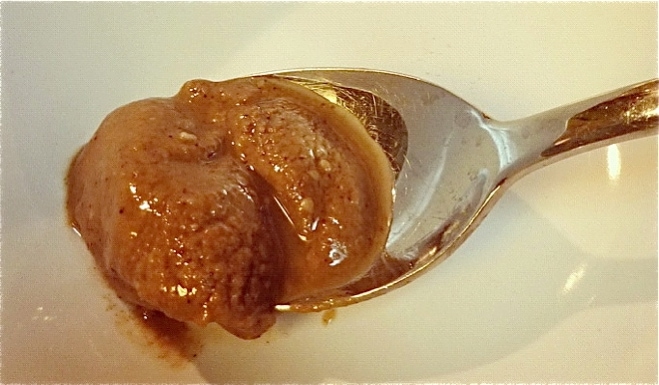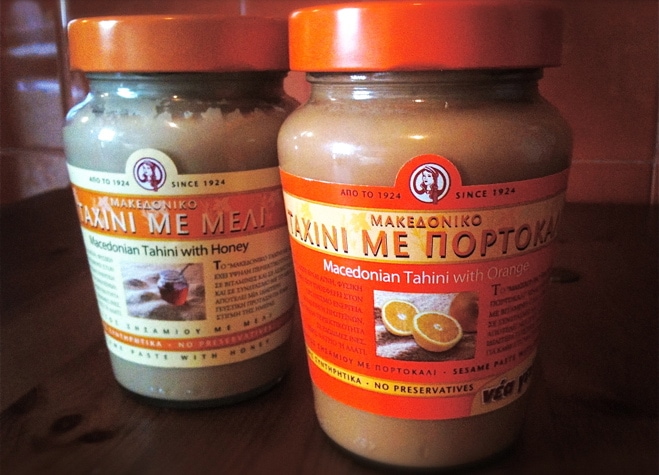
We usually associate tahini with Middle Eastern cuisine, and more so as an ingredient in hummus (which by the way, although delicious and healthy, is not Greek). But tahini has played an important role in Greek cuisine too. Since antiquity, sesame was a common ingredient in many ancient Greek recipes. In modern years, tahini is used mostly during periods of religious fasting. As we mentioned in an older post, with strict fasting Greeks were not allowed to consume olive oil during the week, but they could consume fats from seeds and nuts and that’s where tahini comes in, not only as a source of healthy fat but of protein as well.
Tahini is basically sesame seed paste or sesame butter. It’s the same concept as peanut butter, but instead sesame seeds are used to make it. I have to say that Greeks love their tahini. When I first started consulting Greek clients, I would recommend peanut butter, and they would give me a puzzled look; for them eating peanut butter just seemed weird, peanuts are to accompany a drink, not to spread on bread, I guess it was a bit too “American”. Tahini is a much more familiar taste.
In recent years tahini has gained even more popularity, as tahini companies are strongly promoting their products. In almost every super market you can find tahini with different flavors such as honey tahini, chocolate tahini and even orange tahini (see photo below).

Tahini is an excellent source of protein and vitamin E and a good source of iron, calcium and copper. It also contains lignans a group of substances that have antioxidant activity and appear to lower cholesterol levels in the blood, but also protect from cancer. Tahini is high in fat (like peanut butter) but most of the fat is the good kind: monounsaturated and polyunstaturated.
If you use peanut butter in your diet, it may be worth it to try tahini as well. While tahini has less protein than peanut butter, it contains more calcium, iron, fiber and polyunsaturated fats.
Nutritional Value per 1 tablespoon tahini: 89 calories, 2.5 grams protein, 8 grams fat, 3.1 grams carbohydrates
In my next post, I’ll present healthy recipes with tahini.

In history is says that aztecs had peanut butter.
My husband is Dutch, and now after getting to know the dutch cuisine-well breakfast cuisine, peanut butter now feels completly Ducth. It is influence by Indoneasian cuisine, a former dutch colony, peanut sauce usually made from peanut butter is ubiquitous. The main difference with dutch peanut butter is that it’s called in dutch pinda-kaas so peanut cheese, Apparently they would bring back dry heavy blocks (with most of the oil taken out) of pureed peanuts, the think blocks would then be cut and served on bread like cheese- Nowadays its’ served in jars. Dutch peanut butter is usually just peanuts and salt, so when a jar is being finished off the bottom can be quite dry and hard-like what I expect peanut cheese to look like. Sesame paste-tahini is also a staple on my dutch families table. Just saying this as peanut butter doesn’t have to be seen as ‘so-american.’ Even though the American variety was invented in the states. Greeks are just particular about their cuisine.
Interesting and True. Tahini and sesame butter are vital in the Greek cuisine and throughout the Mediterranean, but it also plays a major part in most Asian cuisines, including in Eastern and South Eastern countries, such as Thailand, India, and the Philippines. In fact, recently sesame butter is also gaining momentum in the North American cuisine as a healthy alternative to butter and a healthier peanut-free substitute for peanut butter. Keep on writing 🙂